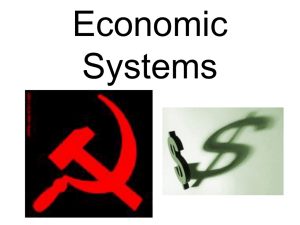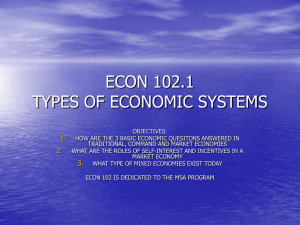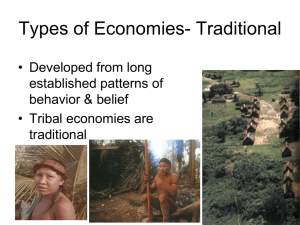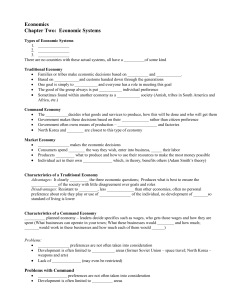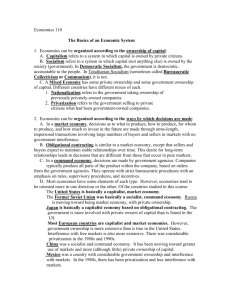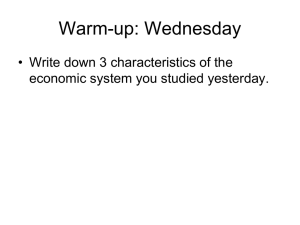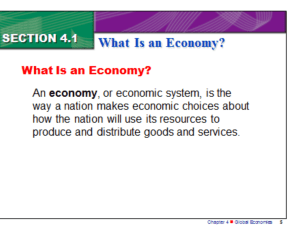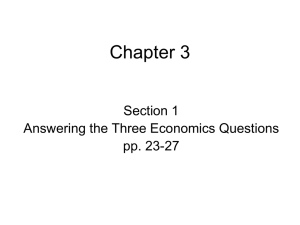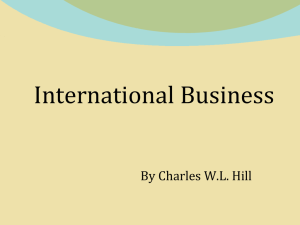Chapter 2 Economic Systems
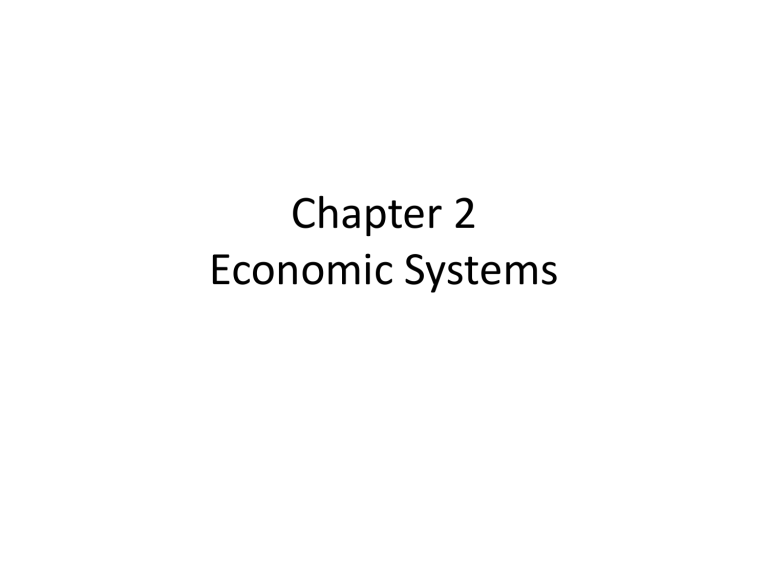
Chapter 2
Economic Systems
Chapter 2
Section 1
Types of Economic Systems
Pages 23-28
Objectives
1. Explain how the three basic economic questions are answered in traditional, command, and market economies.
2. Describe the roles of self-interest and incentives in a market economy.
3. Describe the types of mixed economies the exist today.
Discussion
• Chapter 1 you examined the ways individuals make economic decisions. Now you are going to focus on the ways nations and governments make economic decisions.
a. Which factors influence economic decisions made in your school?
b. Who makes these decisions?
c. What are these decisions based on?
Section 1
• Scarcity forces you to make choices about how to spend money and time. Scarcity results from the combination of limited resources and unlimited wants.
• Nations (leaders) also must make choices in order to use their natural, human, capital, and entrepreneurial resources efficiently.
There are four types of economic systems: traditional, command, market, and mixed.
Traditional Economies
• Traditional economy is based on society’s values. Modern economic activities are based on the collection of rituals, habits, laws, and religious beliefs developed by the groups’ ancestors.
• Traditional economy is passed down from one generation to another. Custom drives what is going to be produced.
Command Economies
• Command economy relies on government officials to answer the three basic economic questions.
• Officials called – central planners/ decide on what will be produced and made. Individuals have little or no say in economic choices.
Command economies don’t exist.
• Feudalism, Egyptian history, Zhou dynasty
(China)
Market Economies
• Individuals answer how the economy is driven. The government has no say in what, how, and for whom goods are produced.
• Market is the free exchange of goods and services.
• Self-Interest- Adam Smith (1723-1790)
Scottish economist and philosopher.
• 1776-An Inquiry into the Nature and Causes of the Wealth of Nations
• When the government is not involved in the economy the market is driven by self-interest.
• Self-interest-the impulse that encourages people to fulfill their needs and wants. Some people thought self-interest would lead people to ignore others. Smith believed that self-interest allowed for an economy to grow.
• Self-interest acts as an “invisible hand” that leads people to do what’s best for society.
• Incentives- something that encourages you to behave in a particular way.
• Examples: reward programs, coupons, percentage off for a certain amount spent.
Biography Assignment
• Conduct research on Adam Smith.
• Discuss his life and his thoughts on modern economics.
• This question should be included in your biography. How Smith has influenced the U.S. free-enterprise system.
Mixed Economies
• Mixed economy-combines all the factors of traditional, market, and command economic models.
• Three main categories of mixed economies: a. Authoritarian and socialism b. Capitalism c. Democratic socialism
Authoritarian Socialism
• Communism-government owns or controls almost all factors of production.
• Cuba is an example of authoritarian socialism.
Capitalism
• Capitalism-individuals own the factors of production and answer the basic economic questions.
• Example: United States, Canada, Mexico, Japan, and Taiwan.
• There is limited involvement from the government. Taxation and spending policies help support education, defense, and social welfare.
• Some government involvement does occur, but free choice and ownership are still important.
Democratic Socialism
• This form of economy falls between authoritarian socialism and capitalism.
• Democratic socialism-government owns some of the factors of production. Examples of this would be utilities and communication systems.
• Free elections of government officials
• Sweden, Poland, and France have some elements of Democratic socialism.
Biography
• Research the author Ayn Rand’s philosophy of objectivism and determine which economic system it most resembles.
• Compare and contrast the philosophies of Ayn
Rand and Adam Smith.
